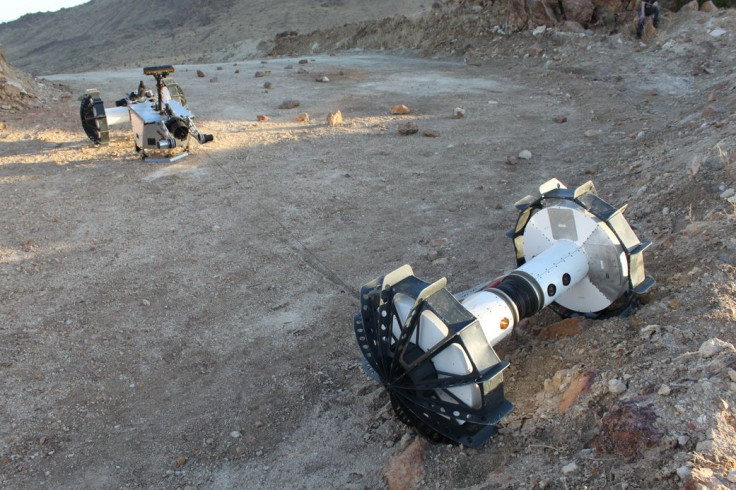NASA's Transforming, Rappelling Rover Can Explore Extreme Terrain [VIDEO]
KEY POINTS
- NASA has a prototype rover that can essentially transform into two rovers
- The design will allow it to explore places that are too difficult for other NASA rovers
- A video from NASA shows the rover during a field test in the Mojave Desert
NASA has a new rover that can transform itself to explore places that other rovers can't. The agency recently shared a video showing how the rover can be of excellent use in future missions.
NASA's Perseverance rover is currently on its way to Mars but engineers are already working on another one that can prove very useful in future missions. Called Dual Axel (DuAxel), the four-wheeled rover looks rather like other NASA rovers but it is actually capable of splitting into two two-wheeled rovers.
Once separated, the rear Axel anchors itself to the ground while the other explores rougher terrains. Since the two halves are connected by a tether, the exploring Axel can essentially rappel down steep terrain.
In a NASA video of the DuAxel field test in the Mojave Desert last fall, one can see the ease with which the rover traverses rough terrain and how it transforms into two separate parts. Once deployed, the non-anchor Axel will be free to explore a steep location, facing various hazards along the way.
Exploring such locations is difficult for current and previous Mars rovers, so they tend to miss out on some excellent exploration sites. Even the Perseverance rover can only explore terrains with slopes of up to 30 degrees, a news release from NASA said.
"The flexibility was built with crater walls, pits, scarps, vents, and other extreme terrain on these diverse worlds in mind," the NASA news release said. "That's because on Earth, some of the best locations to study geology can be found in rocky outcrops and on cliff faces, where many layers of the past are neatly exposed. They're hard enough to reach here, let alone on other celestial bodies."
With DuAxel's transforming capabilities, it can explore previously inaccessible locations.
"This is why I find the Axel rover to be quite delightful," Laura Kerber, a planetary geologist at NASA's Jet Propulsion Laboratory (JPL), said in the news release. "Instead of always trying to safeguard itself against dangers such as falling or flipping over, it is designed to withstand them."
The team behind DuAxel is still continuing to develop and improve the transforming robot. Although DuAxel has yet to be assigned a destination, it can prove useful in exploring the "moon, Mars and beyond."

© Copyright IBTimes 2025. All rights reserved.





















